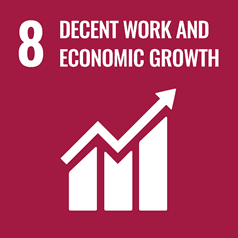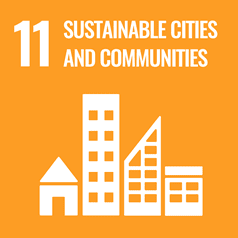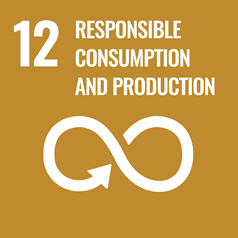We’re not going anywhere: Muswellbrook faces transition beyond coal head on
As the Hunter region of New South Wales inches toward the closure of the state’s largest coal mine, Muswellbrook community members are urging industry to leave a positive legacy in their wake.

With BHP committing to transitioning the Mt Arthur Coal mine to closure by 2030, researchers from the University of Newcastle’s Institute for Regional Futures have published a new report amplifying the voices of a community confronting life beyond coal.
Lead author and University of Newcastle anthropologist, Associate Professor Hedda Askland, said it was a critical moment for industry to listen to those who will remain behind long after they leave.
We’re not going anywhere. We love our house and our land so we’re not going anywhere. (Workshop 4)
I’m gonna get carried out of here in a box, too. (Workshop 8)
“Mine closures can impact local communities dramatically, presenting economic, social, cultural and environmental uncertainties,” Associate Professor Askland said.
“Mt Arthur’s operations stem all the way back to the 1960s when it supplied coal to Bayswater Power Station, so it has helped shape the community over many years.
“Currently, it employs around 2,200 people – many who live in the area – and they, like the broader community, are anxious about what the future holds.
“Understanding what people value about the place they call home is an imperative step toward considering how to best protect communities from any negative impacts of closure,” she said.
Supported by BHP Mt Arthur Coal’s Community Investment program, the research team spoke with 69 community members ‘not already engaged in public discussion’ across 13 sessions between March and December 2024 to gather their experiences and attachment to Muswellbrook as a place, including their hopes for its rehabilitation.
The conversations culminated in 12 recommendations and nine key principles for a place-based, community-endorsed closure strategy strongly recommended for BHP to consider as part of its duty to the region which has facilitated its prosperity.
“We found that residents have very strong emotional ties and an ongoing commitment to the place and see their home of Muswellbrook as far more than a ‘mining town’ – almost separate,” Associate Professor Askland explained.
“As with many regional communities, there’s a deep desire to nurture the natural environment and ensure opportunities remain for their young people.”
With the Mt Arthur site spanning more than 7,000 hectares – around 10 times larger than Sydney’s CBD – questions around land rehabilitation and reuse have bolstered the need for a co-designed closure strategy, with community at its heart.
The recommendations include:
- Investing in social infrastructure and youth programs such as incentives for those from disadvantaged backgrounds to join local sporting teams.
- Embedding Indigenous knowledge in land rehabilitation.
- Supporting local economic development and community-owned enterprises.
- Ensuring transparent governance and community-led decision-making.
Two major social legacy initiatives are proposed:
- A multi-purpose community hub to foster social connection, cultural exchange, and local enterprise.
- Collaborative planning for mine land re-use, ensuring community voices shape post-mining landscapes.
Early activation events – such as youth-led activities, Indigenous cultural celebrations, and environmental restoration days – are recommended to build trust and momentum.
“Participants demonstrated a strong volunteering ethos and a deep belief in giving back to the community,” Associate Professor Askland said.
You’ll see that people don’t just work within this community, they care about this community. They give back to this community. (Workshop 9)
“Interestingly, this sense of exchange was a recurring theme when talking about the mining companies in the region, including BHP, who are seen as having an obligation to leave a positive legacy on the local environment, economy, and community – which has been the source of its prosperity – as they close.”
While BHP’s responsibilities are limited to the closure of its own mine, residents vocalised expectations and hopes that extend well beyond this remit, with the potential for Mt Arthur’s approach to influence other industry leaders.
“They see the Muswellbrook closure as a pivotal event that will set a precedent for future mine closures and, in doing so, position Mt Arthur as a shining example of regional transition and post-mining futures.
“This will only be possible if industry ensures trust is built and maintained with affected communities throughout the transition process.
“Given the strength and specificity of the feedback, I am confident BHP will see value in these community pleas, and embed them into their closure plan to ensure the Muswellbrook region prospers in a new era beyond coal.”
* The University’s Institute for Regional Futures works with government, community and industry to provide research and advice that informs policy and drives decisions for the future of our regions. Associate Professor Hedda Askland leads the ‘Regions in Transition’ research group for the Institute.
Contact
- Gemma Wolk
- Phone: 02 4921 6119
- Email: gemma.wolk@newcastle.edu.au
Related news
- We’re not going anywhere: Muswellbrook faces transition beyond coal head on
- University showcases achievements at NSW Parliament
- A Celebration in Sound — musical generations unite to amplify 60 years of unwavering talent
- Enterprise bargaining factsheet
- University of Newcastle appoints new Executive Director of Newcastle Institute for Energy and Resources (NIER)
The University of Newcastle acknowledges the traditional custodians of the lands within our footprint areas: Awabakal, Darkinjung, Biripai, Worimi, Wonnarua, and Eora Nations. We also pay respect to the wisdom of our Elders past and present.






